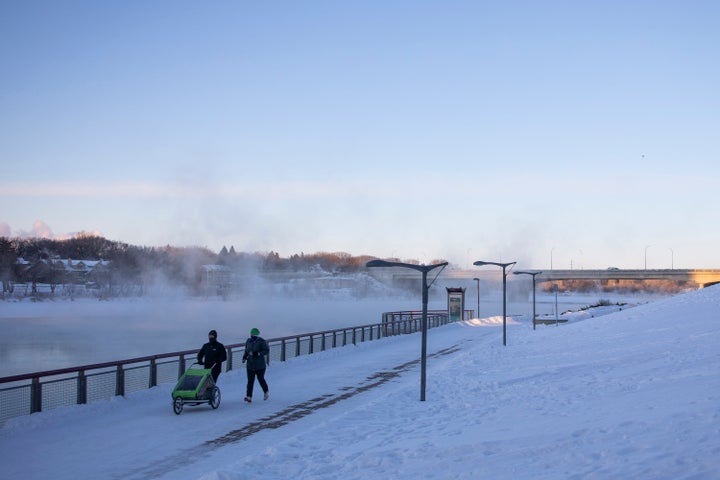
How cold is too cold?
It’s a question many Canadians asked this weekend as temperatures plunged into the deep negative double-digits, shattering records along the way.
A mass of cold air descended across Alberta, Saskatchewan and Manitoba, prompting the coldest days on record in at least 22 communities.
The coldest of the cold? Wekweeti in the Northwest Territories recorded a temperature of –51.9 C, which Environment Canada says is Canada’s coldest temperature in nearly four years.
Uranium City, Sask. was the coldest spot in the prairies where it was a balmy –48.9 C on Sunday, tying its all-time record.
WATCH: What the heck is a polar vortex? Story continues below.
The cold capital of Alberta was Fort Chipewyan, where temperatures hit –47.2 C, breaking the previous record of –45.6 C set in 1936.
And more well-known communities also experienced the bone-chilling deep-freeze. When you factor in the windchill, parts of Edmonton and Calgary felt like –55 C.
Remember when we were making a big deal about how cold the Pfizer COVID-19 vaccine had to be kept? Yeah, this is pretty close to that frigid temperature of –75 C
Many Canadians took to social media to show off just how cold it was in their communities, from frozen doorknobs to frosted eyelashes
It was even too cold this weekend in Calgary for penguins. PENGUINS!
What is a polar vortex?
A polar vortex is a large area of low pressure and cold air that circulates around the earth’s Poles. The “vortex” of it refers to the counterclockwise flow of air that keeps the cold air close to the Pole.
But sometimes during the winter, the vortex around the North Pole becomes less stable and sends cold air south into the jetstream. And that can cause temperatures across North America to plunge.
As for the North, the vortex is actually warming some places up. The descent of cold air into Western Canada has pushed a pocket of warm air into Nunavut, resulting in above-zero temperatures in eastern parts of the territory.
According to Environment Canada, the cold air is set to remain in Western Canada for the rest of the week. An extreme cold weather warning remains in place this week for much of Alberta and Manitoba, and the entirety of Saskatchewan. The cold air is expected to linger and even push west into parts of British Columbia by the end of the week.
So bundle up and stay safe out there. It’s a cold one!